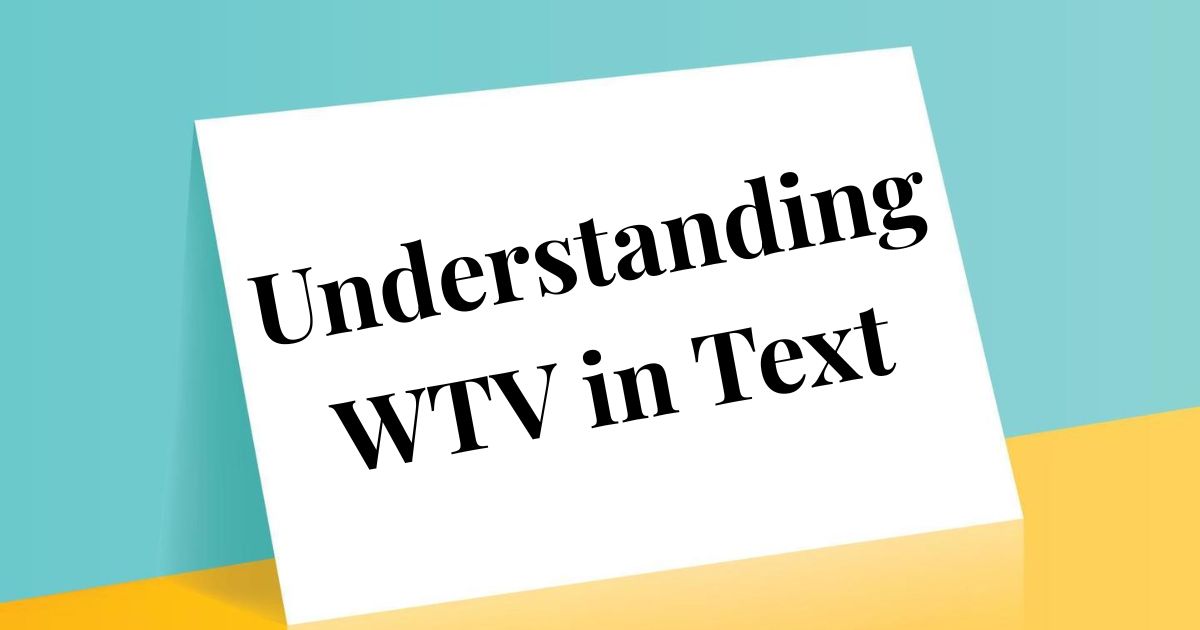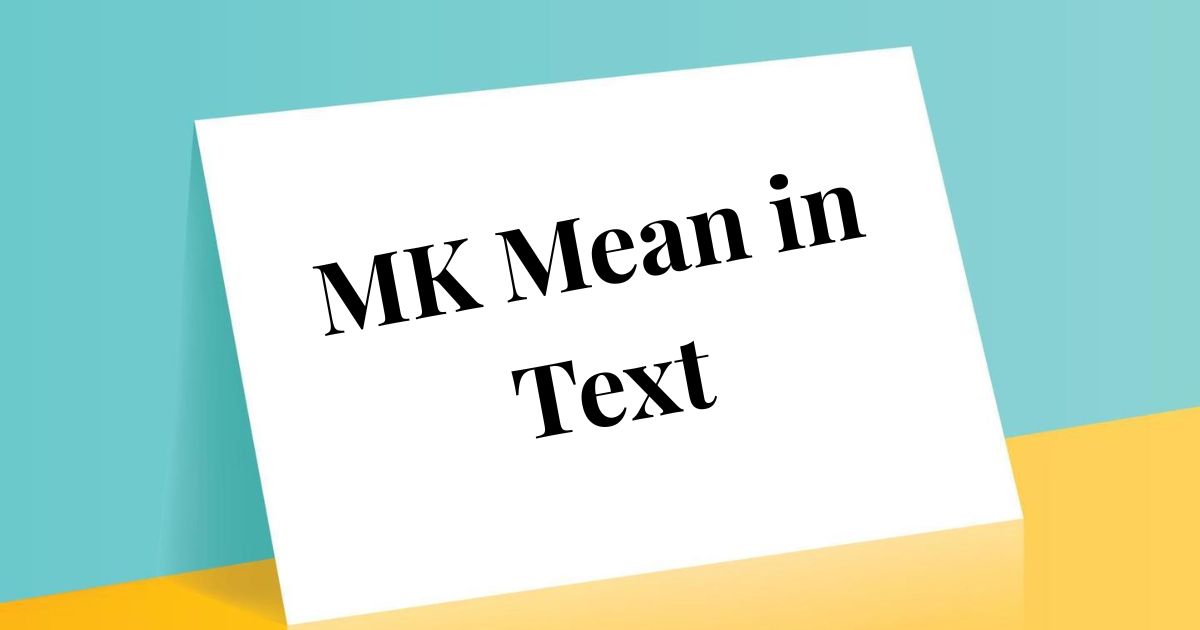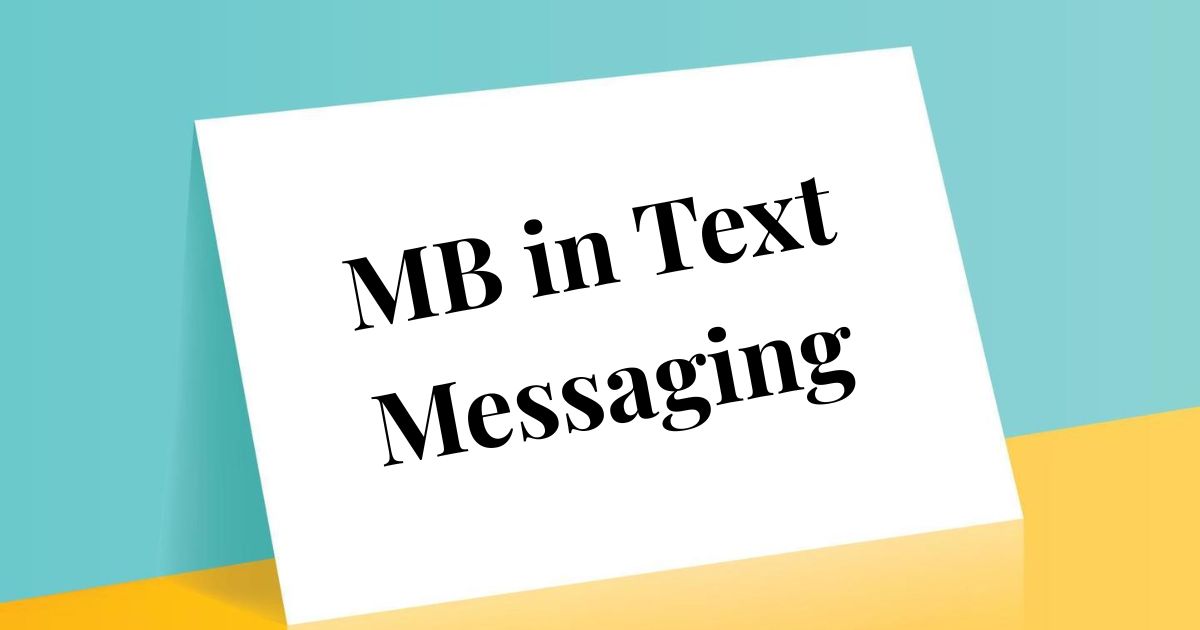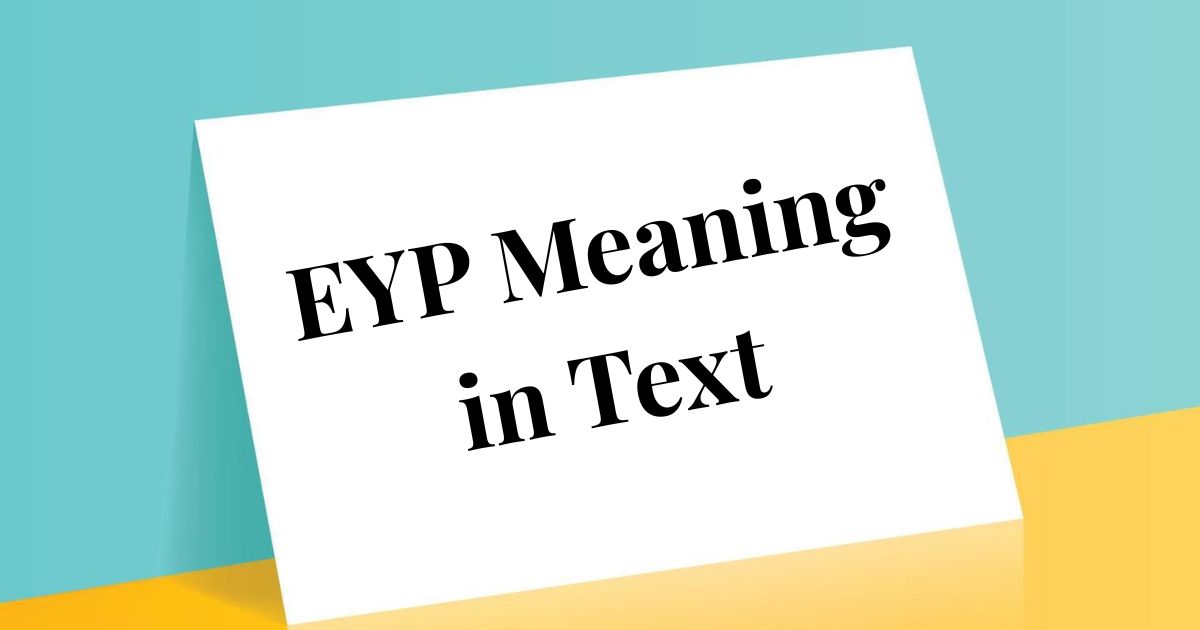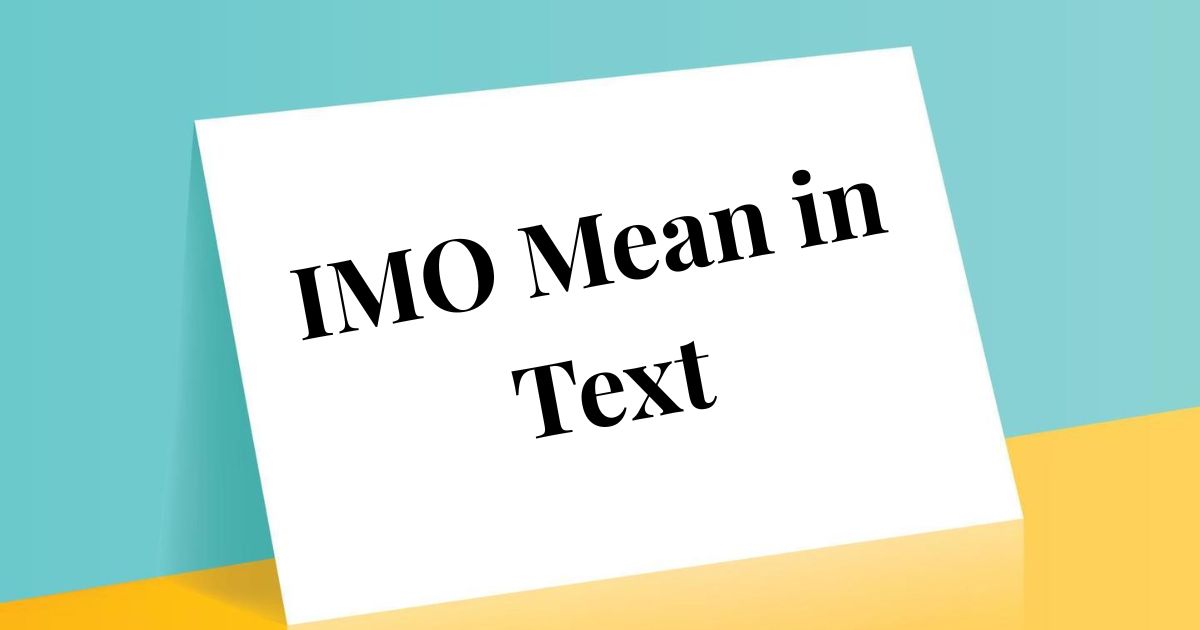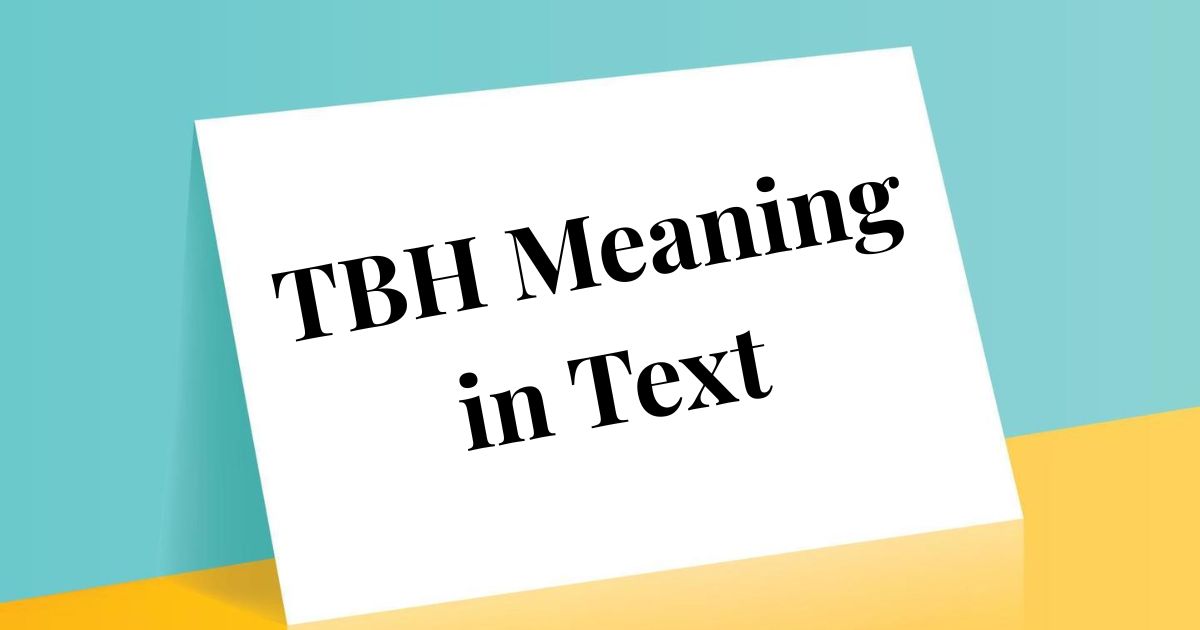Digital communication compresses complex emotions into abbreviated shorthand, and WTV has emerged as one of the most tonally ambiguous acronyms in American texting culture. Whether you’ve received this cryptic three-letter response and felt confused about its emotional weight, or you’re wondering if using WTV makes you seem indifferent or dismissive, understanding what this abbreviation actually means—and recognizing its potential to damage relationships when misused—can transform your communication from accidentally hurtful to genuinely effective across every conversation that matters to you.
What Does “WTV” Mean in Text?
Definition:
WTV stands for “Whatever” in contemporary texting language.
This abbreviation functions as a response indicating flexibility, indifference, or sometimes frustration depending entirely on context and delivery.
Think of WTV as shorthand for “I don’t have strong feelings about this” or sometimes “I’m done discussing this.”
The single word “whatever” already carries complex emotional undertones in spoken conversation—abbreviating it to WTV amplifies that ambiguity dramatically.
WTV can communicate:
Genuine flexibility: “WTV you want to do is fine with me” shows authentic openness to others’ preferences.
Passive-aggressive frustration: “WTV, do what you want” suggests irritation and disengagement from decision-making.
Indifferent dismissal: “WTV” as standalone response communicates lack of investment or care about the topic.
Casual agreement: “WTV works!” indicates relaxed acceptance of proposed plans.
Exhausted surrender: “Fine, WTV” shows someone giving up on trying to reach agreement or be heard.
According to Snapchat’s 2024 Communication Trends Report, WTV appears in approximately 3.8% of messages sent by Americans aged 13-34, though usage patterns vary dramatically based on relationship dynamics and emotional contexts.
The abbreviation’s tonal flexibility creates significant misunderstanding potential—the same three letters can express comfortable flexibility or cutting dismissiveness depending on factors invisible in text.
Tone & Implication:
WTV’s emotional undertone shifts dramatically based on:
Punctuation: “WTV!” sounds enthusiastic; “wtv.” sounds defeated or annoyed; “WTV…” suggests passive-aggression.
Context: Responding WTV to “What should we eat?” differs vastly from responding WTV to “Did you even care about my feelings?”
Relationship history: Among close friends, WTV might signal comfortable flexibility; from a romantic partner mid-conflict, it signals dangerous disengagement.
Message timing: Immediate WTV suggests casual flexibility; delayed WTV after serious discussion suggests frustration or withdrawal.
Surrounding messages: “Yeah WTV sounds good!” reads differently than standalone “WTV” after multiple unanswered questions.
Research from UCLA’s Communication Studies Department (2024) found that standalone “whatever” responses are interpreted as dismissive or hostile 67% of the time, while the same word embedded in supportive sentences receives positive interpretation 82% of the time.
Context determines everything—WTV without supportive framing risks misinterpretation that damages relationships.
Why Understanding Tone Is Crucial
Tone blindness in digital communication creates unnecessary conflict and emotional distance.
Text messages strip away 93% of communication cues present in face-to-face interaction—vocal tone, facial expressions, body language, timing, emphasis patterns—leaving only words and minimal punctuation to carry emotional weight.
This creates what communication researchers call “negativity bias in text”—when tone is ambiguous, recipients disproportionately interpret messages negatively.
According to Pew Research Center’s 2024 Digital Misunderstanding Study, 72% of Americans report experiencing at least one significant relationship conflict stemming from text message misinterpretation within the past year.
WTV exemplifies this problem perfectly:
The sender might mean “I’m genuinely flexible and happy with any option”
The recipient might interpret “You clearly don’t care about my preferences or making effort”
This gap between intended and received meaning creates hurt feelings, resentment, and relationship damage over something as simple as abbreviating “whatever.”
Why tone awareness matters:
Prevents unnecessary conflicts born from misunderstanding rather than genuine disagreement
Demonstrates emotional intelligence and communication competence
Shows respect for recipients by choosing language they’ll interpret correctly
Builds trust through reliable, clear communication patterns
Protects relationships from death by a thousand misinterpreted abbreviations
According to relationship psychologists at the Gottman Institute, communication patterns predict relationship longevity with 94% accuracy—and ambiguous, potentially dismissive responses like WTV contribute significantly to negative patterns.
Choosing clarity over brevity in emotionally significant moments represents relationship investment that compounds positively over time.
Is WTV Rude or Disrespectful?
WTV occupies complicated territory—not inherently rude, but easily interpreted that way depending on context.
The standalone word “whatever” has become culturally coded as dismissive attitude particularly since the 1990s when it emerged as quintessential teenager response to parental authority.
According to linguistic anthropologists at Stanford, “whatever” ranks among the top five most annoying conversational responses in American English, specifically because it simultaneously:
Refuses engagement with the topic at hand
Signals the speaker doesn’t value continued discussion
Implies the other person’s concerns don’t merit serious consideration
Communicates emotional withdrawal from relationship interaction
Creates conversational dead-end that shuts down dialogue
However, context dramatically changes interpretation:
WTV in casual planning: “WTV restaurant you pick is cool with me!” = genuinely flexible, not rude
WTV during conflict: “WTV, I’m done talking about this” = dismissive, potentially relationship-damaging
WTV with enthusiasm markers: “Omg WTV you want!!! 🎉” = excited agreement, not dismissive
WTV after being ignored: “wtv.” = frustrated resignation showing you feel unheard
The relational history matters tremendously too:
Among friends with established casual communication, WTV might be perfectly acceptable shorthand
In newer relationships, WTV risks seeming like you don’t care enough to type complete words
With romantic partners, WTV during disagreements signals dangerous disengagement patterns
To authority figures, WTV reads as disrespectful lack of professionalism
According to Harvard Business Review’s 2024 Communication Study, recipients judge abbreviated responses like WTV as 34% less thoughtful and 41% less respectful than complete word alternatives, regardless of sender’s actual intentions.
When unsure whether WTV might offend, choose complete alternatives—the three seconds saved typing aren’t worth relationship damage.
Polite, Professional, and Friendly Alternatives to “WTV”
WTV works in extremely casual contexts among close friends, but countless situations demand clearer, more respectful alternatives.
1. “I’m flexible—go with what works best for you.”
Tone: Accommodating, supportive, genuinely open
Best context: Collaborative planning, showing respect for others’ preferences, group decision-making
Why it works: Explicitly states flexibility while centering the other person’s needs; sounds cooperative rather than disengaged.
Example: “I’m flexible on the meeting time—go with what works best for your schedule and I’ll adjust.”
2. “I’m okay with whatever you decide.”
Tone: Trusting, supportive, relaxed
Best context: Delegating decisions, showing confidence in others’ judgment, casual planning
Why it works: Combines flexibility with explicit trust; “okay with” sounds positive rather than indifferent.
Example: “I’m okay with whatever restaurant you decide—you know this neighborhood better than I do anyway!”
3. “It’s totally up to you—I trust your judgment.”
Tone: Empowering, confident, warm
Best context: Encouraging others to make decisions, showing respect for their expertise, building confidence
Why it works: Explicitly delegates decision-making while communicating trust and respect for their capabilities.
Example: “It’s totally up to you which contractor to hire—I trust your judgment on this since you’ve done way more research than me.”
4. “I don’t have a strong preference either way.”
Tone: Neutral, honest, clear
Best context: When genuinely indifferent but wanting to communicate thoughtfulness, group decisions, collaborative choices
Why it works: Honestly communicates flexibility while sounding considered rather than dismissive or lazy.
Example: “I don’t have a strong preference either way on the paint color—both options look great to me, so let’s go with whichever you like better.”
5. “Feel free to choose—anything works for me.”
Tone: Open, encouraging, positive
Best context: Empowering others to make decisions, showing flexibility positively, delegating small choices
Why it works: “Feel free” sounds liberating rather than indifferent; “works for me” affirms positive support.
Example: “Feel free to choose the movie—anything works for me as long as we’re hanging out together!”
6. “Go ahead with what you think is best.”
Tone: Trusting, respectful, supportive
Best context: Professional delegation, collaborative partnerships, showing respect for expertise
Why it works: Explicitly trusts their judgment while removing yourself from decision bottleneck productively.
Example: “Go ahead with what you think is best for the design—you’re the expert here and I trust your creative vision.”
7. “Either option is fine by me.”
Tone: Agreeable, positive, clear
Best context: Binary choices, simple decisions, casual planning among friends or family
Why it works: Clearly states both options work while sounding positive and accommodating rather than indifferent.
Example: “Either Thursday or Friday is fine by me for dinner—just let me know which works better for your schedule.”
8. “I don’t mind—happy to go along with your suggestion.”
Tone: Cheerful, cooperative, warm
Best context: Following others’ leads, showing flexibility positively, group activities
Why it works: “Happy to” transforms neutrality into positive enthusiasm; sounds engaged rather than checked out.
Example: “I don’t mind at all—happy to go along with your suggestion since you clearly put thought into this!”
9. “Whatever suits you best is fine with me.”
Tone: Accommodating, considerate, flexible
Best context: Scheduling, planning around others’ needs, showing consideration for constraints
Why it works: Centers their needs explicitly while maintaining your flexibility; sounds thoughtful and considerate.
Example: “Whatever time suits you best is fine with me—I know your schedule is packed so I’m happy to work around it.”
10. “I’ll go with your call on this one.”
Tone: Trusting, collaborative, supportive
Best context: Delegating decisions, showing respect for expertise, partnership dynamics
Why it works: Sports metaphor sounds collaborative and active rather than passive or disengaged.
Example: “I’ll go with your call on this one since you have way more experience with these vendors than I do.”
11. “No strong feelings here—your pick!”
Tone: Casual, friendly, enthusiastic
Best context: Casual planning among friends, low-stakes decisions, showing comfortable flexibility
Why it works: Honestly communicates indifference while remaining engaged and positive through enthusiasm.
Example: “No strong feelings here about which bar we go to—your pick! I’m just excited to catch up regardless.”
12. “I’m open to anything. Let’s do what feels right.”
Tone: Flexible, intuitive, collaborative
Best context: Spontaneous planning, going with the flow, showing trust in collective decision-making
Why it works: “Open to anything” sounds adventurous; “what feels right” suggests you’ll actively participate in sensing the best choice.
Example: “I’m open to anything for the weekend—let’s just do what feels right when the time comes and we see how we’re feeling!”
When to Avoid Using “WTV”
WTV has no place in numerous contexts where its ambiguity creates confusion or its perceived dismissiveness damages relationships.
Avoid it in the following situations:
Professional communications of any kind—emails, workplace chats, client messages, business texts
Using WTV with supervisors, colleagues, or clients reads as unprofessional and disrespectful regardless of your intentions.
During conflicts or emotional conversations where the other person needs to feel heard
“WTV” mid-disagreement signals dangerous emotional withdrawal that escalates rather than resolves conflict.
With romantic partners when discussing feelings, plans, or relationship matters
WTV in romantic contexts often gets interpreted as “I don’t care about you or this relationship enough to engage thoughtfully.”
When someone explicitly asked for your opinion or input
If they specifically requested your thoughts, responding WTV dismisses their attempt to include you and value your perspective.
In new relationships before communication norms are established
WTV risks making terrible first impressions before they understand your communication style means no disrespect.
With authority figures including parents, teachers, bosses, or elders
WTV reads as fundamentally disrespectful to anyone in authority positions regardless of how casual you intend it.
When discussing important or sensitive topics requiring thoughtful engagement
Healthcare decisions, financial planning, legal matters, family issues—all demand engagement WTV completely undermines.
After someone shared vulnerability or emotional content with you
Responding WTV to someone’s emotional sharing signals cruel indifference to their feelings and trust.
In group settings where your response affects multiple people
Your individual WTV impacts everyone’s planning or decision-making—show respect through complete engagement.
When you actually DO have preferences but fear expressing them
Using WTV to avoid asserting preferences creates passive communication patterns damaging to relationship health.
According to relationship counselors at the Gottman Institute, communication withdrawal patterns—including dismissive responses like WTV during important conversations—predict relationship failure with 85% accuracy.
When stakes matter emotionally or practically, WTV risks damage that three seconds of typing complete words would prevent.
Understanding the Emotional Subtext of “WTV”
WTV carries hidden emotional messages beyond its literal meaning.
1. Indifference
Message: “I don’t care enough about this to have an opinion or make effort in decision-making.”
How it manifests: Standalone “WTV” responses to planning questions, preference requests, or opinion-seeking
Impact: Recipients feel their attempts to include you or value your input get dismissed; over time, they stop asking and emotional distance grows.
Example: Friend asks “Mexican or Italian for dinner?” You respond “wtv”—they interpret you don’t care about spending time together enough to have preferences.
2. Frustration
Message: “I’m annoyed with this conversation/situation/person and done engaging productively.”
How it manifests: WTV appearing mid-conflict, after repeated questions, or with punctuation suggesting irritation (“wtv.”)
Impact: Escalates conflict by signaling emotional withdrawal; prevents resolution by shutting down communication.
Example: Partner asks “Why didn’t you tell me about your plans?” You respond “wtv I don’t want to talk about this”—they interpret you don’t value their feelings or relationship communication.
3. Sarcasm
Message: “I’m saying ‘whatever’ but clearly communicating through tone that I do care and am bothered.”
How it manifests: WTV following obvious disagreement, with sarcastic emojis, or after being overruled
Impact: Creates passive-aggressive communication patterns; says one thing while meaning another, breeding resentment.
Example: Boss overrides your suggestion. You respond “WTV you want 🙄”—they recognize your resentment despite surface agreement, damaging professional relationship.
4. Agreement
Message: “I genuinely am flexible and comfortable with any option—you choose!”
How it manifests: WTV with positive punctuation/emojis, embedded in longer supportive messages, in established comfortable relationships
Impact: When clearly positive, strengthens relationships by demonstrating trust and flexibility; requires careful framing to land correctly.
Example: Close friend asks “Should we see the early or late movie?” You respond “WTV works! Just excited to hang 😊”—clearly positive flexibility.
How to Respond When Someone Texts “WTV”
Receiving WTV requires reading contextual clues to interpret correctly and respond appropriately.
A. When “WTV” Seems Casual:
Indicators: Positive emojis, enthusiastic punctuation, embedded in friendly conversation, from people you know well
Appropriate response: Proceed with decision-making confidently, acknowledging their flexibility
Example response: “Awesome! Let’s do the early show then—I’ll grab tickets!”
Why it works: Takes their stated flexibility at face value; moves conversation forward productively.
B. When “WTV” Feels Cold or Frustrated:
Indicators: Standalone response, delayed timing, appears mid-conflict, from someone who seems upset, punctuation suggesting irritation
Appropriate response: Address the emotional subtext rather than proceeding with surface-level decision-making
Example response: “Hey, you seem upset—did I say something wrong? Want to talk about what’s actually going on?”
Why it works: Recognizes emotional withdrawal and invites genuine communication rather than ignoring obvious distress.
C. If You’re Unsure of the Meaning:
Indicators: Ambiguous context, unfamiliar communication partner, stakes matter enough that misinterpretation risks relationship damage
Appropriate response: Seek clarification gently without accusation
Example response: “Just want to make sure—are you genuinely good with anything, or would you rather make this call yourself?”
Why it works: Invites clarification without assuming negative intent; shows you care about understanding them correctly.
According to conflict resolution experts, addressing emotional subtext rather than ignoring it resolves 78% of conflicts before they escalate, while ignoring obvious distress signals allows 89% of conflicts to intensify.
When someone’s WTV feels off, trust your instincts and address the emotion rather than the surface message.
Why Politeness & Clarity Matter in Modern Texting
Digital communication lacks the automatic clarification mechanisms present in face-to-face conversation.
In person, if someone says “whatever” with annoyed tone, you immediately recognize frustration and can respond to actual emotion.
In text, “WTV” provides zero vocal, facial, or contextual cues—you’re guessing at emotional content based solely on limited evidence.
This inherent ambiguity means unclear or potentially dismissive language creates disproportionate relationship damage compared to in-person equivalents.
Why clarity and politeness matter more in text:
No immediate correction opportunity: Misinterpreted in-person comments get clarified instantly through follow-up; text misinterpretation can fester for hours or days before addressing.
Negativity bias amplification: Ambiguous texts get interpreted negatively far more often than ambiguous in-person comments.
Permanence creates compounding: Text messages exist as reviewable record; one dismissive WTV viewed repeatedly causes more damage than equivalent spoken word.
Context collapse: Texts lack situational context present in physical conversations—what’s clearly joking in person reads as serious in text.
Emotional labor requirements: Recipients must do significant interpretive work to understand your actual meaning when you use ambiguous language.
According to Harvard Business Review’s 2024 Digital Communication Study, professionals who prioritize clarity and politeness in digital communication receive 68% higher ratings on emotional intelligence assessments and 52% more positive performance reviews than those using casual, ambiguous language.
Choosing complete, clear, respectful language represents relationship investment that compounds positively across every interaction.
Cultural Considerations & Generational Differences
WTV’s appropriateness and interpretation varies dramatically across cultural and generational lines.
Generational perspectives:
Gen Z (born 1997-2012): Generally comfortable with extensive abbreviations; may use WTV casually without negative connotations
Millennials (born 1981-1996): Recognize WTV but often interpret it as dismissive based on 1990s “whatever” culture
Gen X (born 1965-1980): May not know WTV abbreviation; “whatever” carries strong negative associations from raising teenagers
Baby Boomers (born 1946-1964): Unlikely to understand WTV abbreviation; prefer complete sentences and find abbreviations disrespectful
Silent Generation (born 1928-1945): Almost certainly won’t understand; may feel confused or dismissed by abbreviations
Cultural considerations:
Direct communication cultures (American, Dutch, German) may interpret WTV as refreshingly honest flexibility
Indirect communication cultures (many Asian, Latin American) may find WTV inappropriately blunt or disrespectful
High-context cultures expect reading between lines but within culturally-shared frameworks—WTV’s ambiguity falls outside those frameworks
Collectivist cultures value group harmony over individual preference assertion—WTV might seem antisocial rather than flexible
Hierarchical cultures demand respect through language formality—WTV to anyone senior reads as fundamentally disrespectful
According to cross-cultural communication researchers, 73% of international business miscommunications stem from casual language use that seems normal in American English but offensive or confusing in other cultural contexts.
When communicating across generational or cultural lines, always choose complete, clear, respectful alternatives to WTV.
Read More: TBH Meaning in Text: What It Stands For & Polite Alternatives to Express Honesty 2025
Conclusion
WTV represents efficient shorthand that works beautifully in extremely casual contexts among close friends who share communication norms and relationship security, yet its tonal ambiguity and dismissive potential make it inappropriate for countless situations where relationships, professional reputation, or emotional connection matter. Master the twelve polite alternatives explored here, consciously recognize when WTV risks misinterpretation, prioritize clarity over brevity in emotionally significant moments, and develop tone awareness that lets you adapt language to audience and context—your communication will become clearer, your relationships stronger, your conflicts fewer, and your reputation as someone who genuinely cares about connection infinitely more credible across every interaction navigating 2025’s complex digital landscape.

I’m Борис, Writing social media related contents, Here I’m share cool Instagram captions and fun content. Enjoy creative ideas, trends, and tips for social media success!
